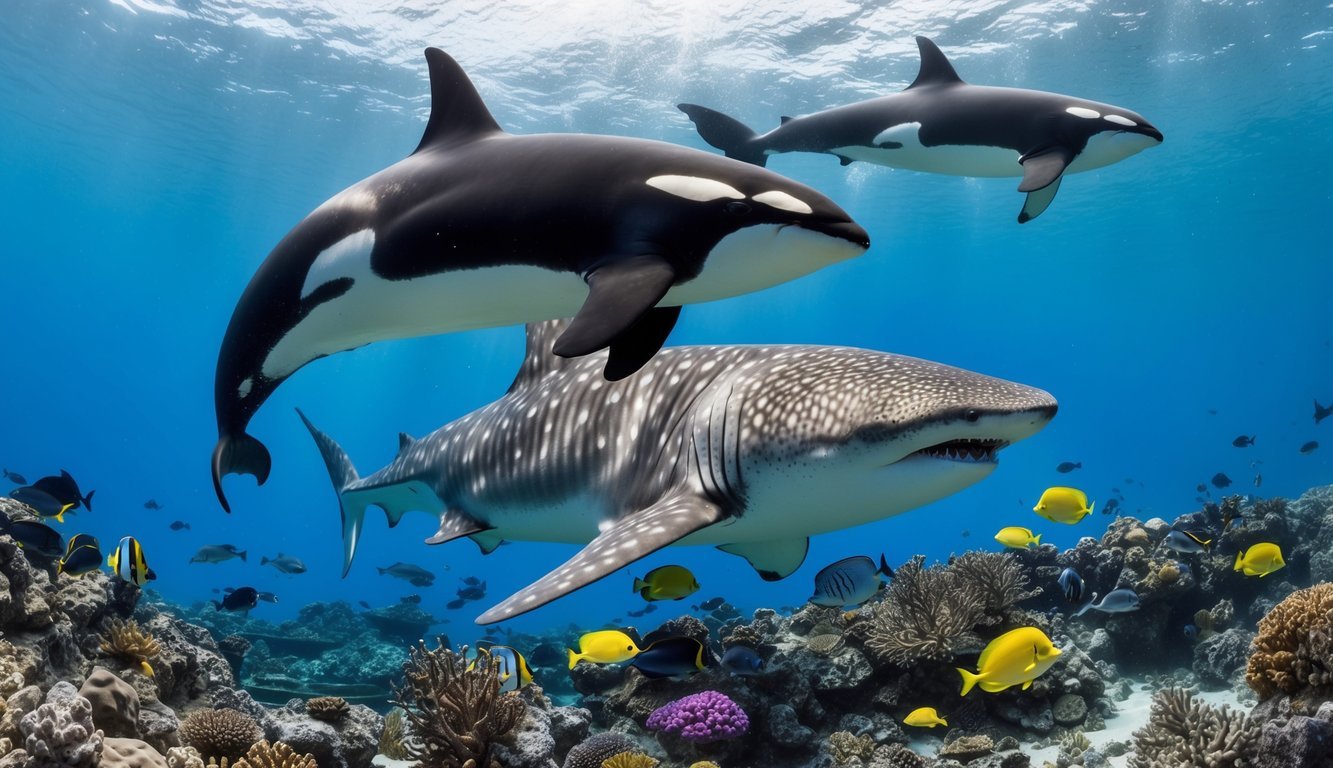
Recent observations along Mexico’s coast have unveiled a troubling and fascinating development: a group of orcas has honed an alarming skill in hunting whale sharks, the ocean’s largest fish. This aggressive predatory behavior is primarily driven by a dominant male frequently seen leading these coordinated hunting endeavors.
Significance of Orca Hunting Strategies
Volker Deecke, a wildlife conservation professor at the University of Cumbria in the U.K., emphasizes the significance of this behavior, noting that orcas consistently showcase their ability to devise specialized strategies for targeting specific prey. The emergence of this phenomenon is particularly captivating.
Whale sharks, which can weigh up to 40 tons and reach lengths of around 40 feet, are gentle giants of the sea, some even stretching to over 60 feet. In contrast, orcas, more familiarly known as killer whales, typically measure no more than 32 feet. Yet, researchers have documented these smaller cetaceans employing sophisticated techniques to hunt the massive creatures. The findings of this research, shedding light on the interplay between these two species, were recently published in the journal Frontiers in Marine Science.
Hunting Techniques Observed
The study, which spanned from 2018 to 2024 in the southern Gulf of California, meticulously analyzed photos and video footage depicting four distinct hunting incidents. The technique employed by the orcas involves striking whale sharks with incredible speed to disorient them, flipping them upside down and rendering them incapacitated. This maneuver leaves the sharks unable to navigate their way back to deeper waters, according to marine biologist Jesús Erick Higuera Rivas from the nonprofit organization Conexiones Terramar.
Once the initial attack has been executed, the orcas target the pelvic region of the whale sharks, resulting in severe bleeding that allows them access to the sharks’ nutrient-rich livers. Although the researchers did not observe the orcas consuming the livers during the study, this organ is known to be a preferred meal among orca pods in other regions.
Notably, in three of the four documented hunts, a prominent adult male orca named Moctezuma played a crucial role. The single event conducted by females previously seen with Moctezuma suggests that he may be teaching his hunting techniques to the rest of the pod, although this theory remains to be confirmed.
Understanding the Origin of this Behavior
The origin of this predatory behavior is uncertain; it could be a recent phenomenon or a practice that has gone unnoticed for years. Deecke points out that increased human activity and the proliferation of affordable waterproof cameras may have contributed to the visibility of such rare behaviors that might have slipped under the radar in the past.
Research across the globe has shown that killer whale populations often specialize in hunting particular prey using distinct techniques. The discovery of orcas in the Gulf of California developing strategies to target whale sharks, while striking, fits seamlessly within the known behaviors of these highly intelligent marine mammals.
“`htmlStudy Details:
- Authors: Jesús Erick Higuera Rivas et al.
- Journal: Frontiers in Marine Science
- Publication Date: November 29, 2024
- DOI: 10.3389/fmars.2024.1448254
- Link: https://www.frontiersin.org/journals/marine-science/articles/10.3389/fmars.2024.1448254/full

